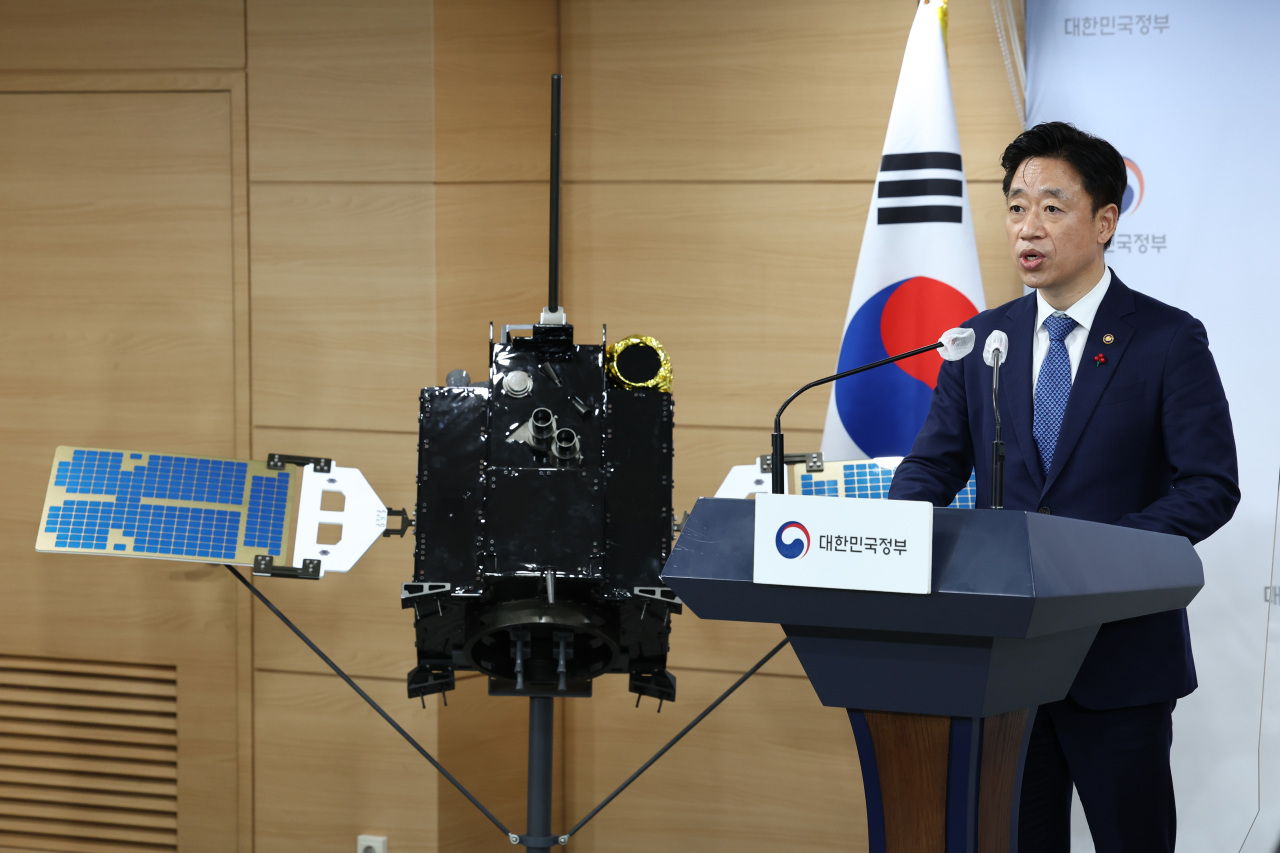[Newsmaker] Danuri successfully enters lunar orbit
S. Korea becomes 7th country in the world to explore the moon
By Kan Hyeong-wooPublished : Dec. 28, 2022 - 15:43

With Danuri’s successful entrance into lunar orbit, South Korea has become the seventh country in the world to have capability to explore the moon.
Danuri, also known as the Korea Pathfinder Lunar Orbiter, began circling around the moon at the targeted orbit altitude of some 100 kilometers above the lunar surface on Tuesday after completing its third and last lunar orbit insertion, or LOI, maneuver at 11:06 a.m. on Monday.
According to the ministry, the KPLO is currently orbiting the moon about every two hours at a speed of 1.62 kilometers per second. The KARI said the targeted orbit’s altitude range is between 104-120 kilometers above the lunar surface.
The KARI, which is in charge of directing Danuri’s mission, initially planned to carry out a total of five LOI maneuvers to slow down the KPLO’s speed to enter the moon’s orbit. But the plan changed after the first LOI maneuver allowed engineers to secure its space flight data and confirm operational stableness. The KARI officials then decided to cut down the number of remaining LOI maneuvers in half to two, moving up the lunar mission's successful orbit entrance by two days.
Kim Dae-kwan, head of the KARI's lunar exploring project, said Danuri has about 35 percent left in the fuel tank with 93 kilograms, which will be enough to carry out its probe mission over the next year.
"Danuri's six payloads weigh 678 kilograms and its competitiveness comes from the fact that it can operate all six of them at once, whereas other (orbiters) weigh more than 1 ton," Kim said in a briefing.
With the six payloads, Danrui’s missions include identifying potential landing sites for Korea’s future lunar missions, analyzing the traits of the lunar surface such as terrain, magnetic strength and gamma rays, exploring the dark side of the moon and testing interplanetary internet communication in deep space.
Kim underscored Danuri's wide-angel polarimetric camera, or PolCam, explaining that it will be the first PolCam video of the moon taken at an altitude of 100 kilometers.
"What's more important is that we will be able to capture the back side of the moon with the PolCam for the first time," he said.
S. Korea's successful entrance into lunar orbit came 30 years after the country developed its first satellite Wooribyul-1 in 1992. The country began the development of Danuri in 2016.
Danuri was launched into space on the SpaceX Falcon rocket from Cape Canaveral Space Force Station in Florida on Aug. 5. The lunar mission then took on a four-month journey to the moon’s orbit through an energy-efficient trajectory called “Ballistic Lunar Transfer” which uses interplanetary gravity pulls to minimize the amount of fuel. In doing so, Danuri traveled almost 6 million kilometers to get to lunar orbit.
Danuri is scheduled to begin its missions around the moon in February after checking its movements and functions in January. Kim said next month's assessment will test the ground prediction of space temperature environment, gravity pulls and possible interference with other lunar orbiters from different countries, adding the planned mission scenario is likely to be revised.
President Yoon Suk-yeol touted the country’s space achievement. “Danuri, which left the earth 145 days ago, has succeeded in entering lunar orbit. It’s a historical moment as Korea let the world know its excellence in space science technology and became the seventh space powerhouse in the world,” he wrote in a Facebook post.
The Yoon administration on Nov. 28 laid out a grand space economy blueprint when the president announced the goals of landing on the moon and Mars by 2032 and 2045, respectively.



















![[Today’s K-pop] Treasure to publish magazine for debut anniversary](http://res.heraldm.com/phpwas/restmb_idxmake.php?idx=642&simg=/content/image/2024/07/26/20240726050551_0.jpg&u=)